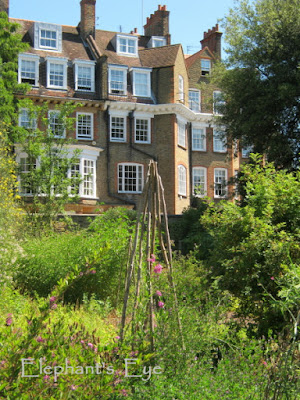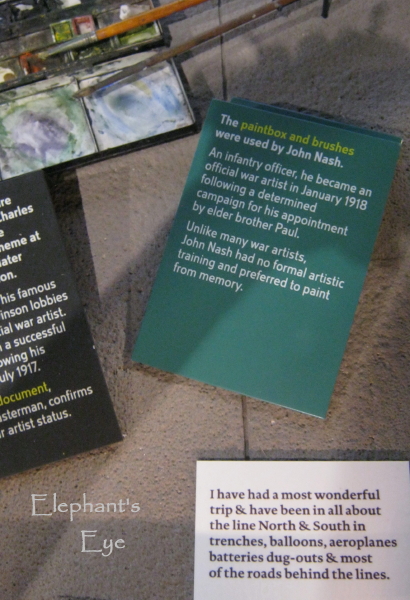Chelsea Physic Garden and London
by Diana
Studer
- gardening for biodiversity
in Cape Town, South Africa
When I worked at the University of Cape Town I read about
the Chelsea Physic Garden opening to the public. In 1987 the day we flew back
to Zurich from a London holiday, utterly exhausted we lay on the lawns in the
garden. Fast
forward to this July. We walked wrong to the Thames entrance, before we reached
the Swan Walk Gate.
On my father's side I am distantly related to Sir Hans
Sloane. (Daniel Watkins, who was the first doctor to go to New Zealand, married
Julia Maria Sloane in 1827) Sir Hans was an apothecary apprentice from Ireland.
In 1687 he returned from Jamaica with two treasures. Quinine against malaria
sourced from the Cinchona tree. And chocolate! Used as a drink by Jamaican
mothers for children with colic. He was graciously able to leave his garden to
the apothecaries, for the proverbial peppercorn rent, of five pounds a year.
A new biography of Hans Sloane was published in 2017. Collecting the World, by James Delbourgo. In 1695, he married the widow Elizabeth Langley Rose. Elizabeth’s first husband had been “one of Jamaica’s leading slave owners, reckoned to be one of only six colonists who regularly purchased hundreds of Africans in the 1670s.”
The Chelsea
Physic Garden was founded in 1673. London's oldest botanical garden. Four
acres of Chelsea which the Worshipful Society of Apothecaries used to grow
their medicinal herbs and train their apprentices (what is it and what does it
do??) South-facing, good soil from a former market garden, and access to the
Thames for botanising expeditions.
Nathaniel Bagshaw Ward invented the Wardian case, to move
living plants across the sea - leading to tea farming in India and rubber
plantations in SE Asia.
I would love time to explore the monocot and dicot beds laid
out by families. For example the tomato family gives us hyoscine (travel
sickness).
They have renamed it again ... 464 of the 565 traditional
plant families have been confirmed by DNA. Lotus is related to the London plane
tree, not water lilies. Roses are closer to buckthorn, nettles and figs than
saxifrages.
I was charmed by the affectionate gathering at jovial Sir
Hans' feet in July with Rosa Munstead
Wood and Lilium Bracelet in his
circle. Huge white daisy Arctotis grandis (renamed venusta)
a dry summer rainfall surprise from my home. Softly salmon Lavatera, hibiscus family from the Canary Islands. Sculptural
cardoon or artichoke? Gentle lime yellow Cephalaria,
teasel family from Central Europe. Huge bizarre leaves on Amicia, pea family from Mexico. Mauve Agrostemma, carnation family from SW Asia.
We ate at Amico Bio - vegetarian and
Italian! And Food
Heddon at Tibits. Imagine - a vegetarian hot and cold buffet, 40 dishes
with many changing daily. And a dessert buffet with 20 choices. Double sigh!!
At the Imperial War Museum I understood why my mother never
did learn to like rice, or pasta, preferring a little bread with her Cornish
butter! We are exploring millet,
as more nutritious than rice.
We walked to Postman's
Park and read all the tributes.
Grateful to my blogs for virtual visits to distant
exhibitions. At the Foundling Museum
I longed to see Threads
of Feeling (a 2010 gem that hooked me into the joy of blogging!) - when desperate women brought their children they took
a piece cut from the baby's clothes as proof one fine day that THIS child is
mine. Inspiring Tracey
Emin's sculpture on the fence
outside. Coram was appalled by abandoned babies as he walked in London. Handel
and Hogarth were original supporters. Today they provide social services for the most
vulnerable children. Coram's Fields was being happily used - 'adults
may only enter if accompanied by a child.'
I went to the Imperial War Museum hoping to find information
about my
grandfather and kite balloons. Without an appointment I couldn't access the
books - but I did see this small proof.
I invite you to join us at Elephant's Eye on False Bay.
Please subscribe as you prefer
via Feedly,
or Bloglovin,
Pictures by Jurg and Diana Studer
(If you mouse over teal blue text, it turns seaweed red.
Those are my links.
To read or leave comments, either click the word Comments
below,
or click this post's title. If you are in email or a Reader,
first click thru to the blog)











I learned so much from your post Diana. When we visited London I was much more interested in the main tourist spots and not much of a gardener at the time either. Traveling to places with family connections makes the trip even more special and meaningful. I followed your links and a few more. During the Cold War years I heard the phrase "when the balloon goes up" and never knew the origin or meaning. Now I do, with thanks to your post for leading me there.
ReplyDeletethat phrase is new to me - and I in turn have been Googling and learning.
DeleteI love Chelsea Physic Garden, such a haven of peace from London's bustle. Postman's Park is special too.
ReplyDeleteWhat a gorgeous garden. My daughters and grandchildren are in London right now and I am so jealous. xo Laura
ReplyDeleteAnother fascinating posting, Diana. I knew about the Wardian case and own a modern day version in which I planted a terrarium garden. P. x
ReplyDeletebut I only discovered on the guided walk that I have Ward to thank for my tea ;~)
DeleteThanks for a deeper look at the sights of London, Diana. I've yet to visit the UK but hope to get there one day.
ReplyDeleteWhat a fantastic trip, Diana! Great you took me to that fabolous place! These English Gardens .... ohhhh!
ReplyDeleteTo answer your question. No, it doesn't but olive soap and olive (or in that case lavernder) oil is good for renovating old wood.
All my best and happy days
Elisabeth
Thank you for a most interesting and informative post Diana, you could write a book on this post! I was interested to know that Quinine came from the Cinchona tree as my parents lived in the north of Zambia and could not have survived without quinine. What would we have done without Botanic gardens and experiments with medicinal herbs and plants? I'll enjoy looking at some of the links you have to other blogs, as you say, the joys of blogging!
ReplyDeleteIt's been almost twenty years since I visited Chelsea Physic Garden, and this post made me want to go back. I was so ignorant about botany then that I didn't really appreciate what I was seeing. (I love the cartoons about changing plant names.) Time to plan another trip to England!
ReplyDeleteWow -- a relative of Sir Hans Sloane -- great gardening genes. :-)
Lovely informative post Diana; I'm ashamed to say that the Chelsea Physic Garden is still on my to see list - I don't know how it is possible that I've never visited.
ReplyDeleteNext time I'm in London (if ever) I'll be there! The guided walk was a perfect way to whisk around and get a first impression.
DeleteWhat an interesting post, thank you. Sadly I haven't got around to visiting the garden, was due to go several years ago when we were staying in the area but torrential rain put paid to it. I love Tibits, I wish there was one in Cornwall, at least we have the Cornish butter. I also love Tracey Emins work and hadn't seen this though heard about it.
ReplyDelete